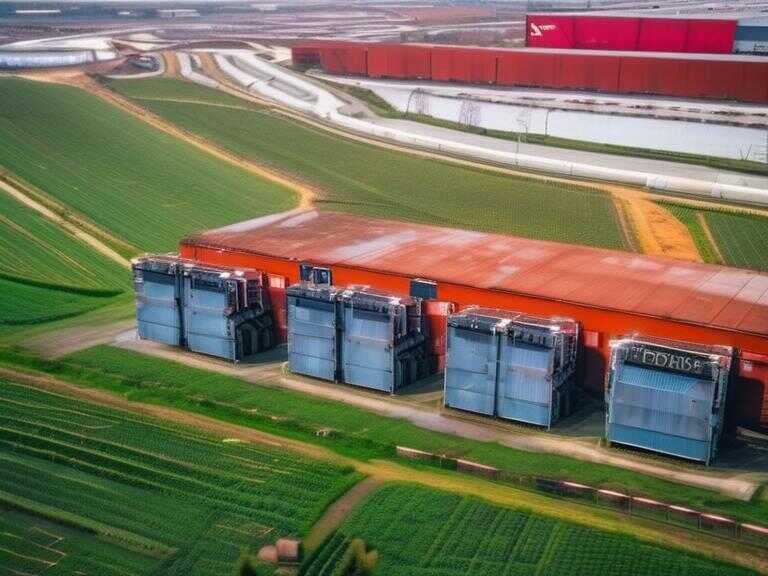
Rare 'Once in a Thousand Years' Storm Causes Devastation, Flooding, and Deaths in Northeast
A severe storm caused unprecedented rainfall, flooding, and fatalities in the Northeast, raising concerns about infrastructure and the impact of climate change.

A series of devastating storms recently swept through the Northeast, prompting widespread concern and discussion about the impact of climate change on extreme weather events. This article aims to provide a comprehensive overview of the recent storm events, their devastating consequences, and the broader implications for climate patterns in the Northeast.
The Chaotic Storms and Their Consequences
Over the weekend, two locations in the Northeast experienced an unprecedented deluge of rain that would typically only occur once in a millennia. The storm claimed the lives of at least three individuals and caused extensive flooding. Parts of Connecticut, including Oxford and Southbury, witnessed a staggering rainfall of approximately 10 inches within a span of just 12 hours on Sunday. Meanwhile, a nearby area, Stony Brook, New York, recorded 6.7 inches of rain in a mere three hours on the same night. According to federal rainfall probability data, these events have a mere 0.1% chance of occurring within a year.
This extreme weather phenomenon one-two punch of severe rainfall is especially noteworthy not only due to its intensity but also because it was not concentrated in a single instance but rather occurred in the span of consecutive events. The director of the state weather risk communication center at the University of Albany, Nick Bassill, emphasized the significance of witnessing two areas experiencing equally extreme rainfall as an anomaly deserving attention and further analysis.
The connection between extreme weather events and climate change, particularly in the context of the Northeast, has sparked a renewed focus on understanding the potential impacts of global warming on precipitation patterns. While it is challenging to establish a direct causal link between climate change and a specific event, experts suggest that the increasing likelihood of severe storms aligns with the patterns predicted due to global warming.
Changing Precipitation Patterns and Their Implications
Mark Wysocki, a renowned climatologist, observed that thunderstorms have been exhibiting a tendency to deliver more rainfall than before. This trend can be attributed, at least in part, to the warming of the atmosphere. For every degree of Fahrenheit increase in temperature, the atmosphere is capable of holding approximately 3% to 4% more moisture. This warming trend has resulted in global temperatures being about 2.4 degrees Fahrenheit higher than pre-industrial times in 2023, indicating that storms today can deliver a more significant amount of precipitation.
The Northeast has witnessed a notable increase in extreme precipitation events in recent years. The 2023 National Climate Assessment revealed a 62% rise in the occurrence of days with 3 inches of precipitation or more from 1958 to 2018. Additionally, the number of days with at least 5 inches of precipitation more than doubled within the same timeframe. Such a dramatic increase in severe storms poses significant challenges to existing infrastructure, including roadways, stormwater systems, and pipes, which were originally designed to withstand a more moderate climate.
Resilience of Infrastructure and Urban Planning
The recent storms have served to highlight the limitations and vulnerabilities of existing infrastructure in the Northeast. Many cities and towns, including New York City, were not designed to accommodate the intensity of rainfall witnessed during the recent storms. For instance, New York City’s sewer pipes were built to handle approximately 1.75 inches of rainfall per hour, with flooding expected once every five years based on these design standards. However, with the increase in the frequency and severity of heavy rainfall events, the likelihood of flooding in the city and surrounding areas has escalated significantly.
In Stony Brook, a staggering 3.79 inches of rain fell within just one hour on Sunday, leading to significant flooding. The impact of such extreme rainfall on the infrastructure of cities and towns has been underscored by the tragic incidents resulting in the loss of lives and extensive property damage in Connecticut.
Exploring the Relationship Between Climate Change and Storm Behavior
Climate change is believed to be influencing the behavior of the jet stream, causing areas of high and low pressure to stall or become blocked more frequently. This alteration in atmospheric dynamics may result in storm systems lingering over a particular region for extended periods, leading to the delivery of excessive moisture in a localized area. However, it is important to note that this research is still in its early stages and requires further investigation and validation.
Preparing for Future Challenges
The challenges posed by increasingly extreme weather events have prompted discussions around the need for urban planning and infrastructure design that can better withstand such conditions. As cities and towns face the reality of more frequent and severe storms, considerations for flash flood risks must play a central role in future urban development and planning strategies.
The recent storms resulting in unprecedented rainfall and devastating consequences have once again brought the complex relationship between climate change and extreme weather events to the forefront. The Northeast region is witnessing a rise in extreme precipitation events, stressing existing infrastructure and necessitating a reevaluation of urban planning and design.
Share news















